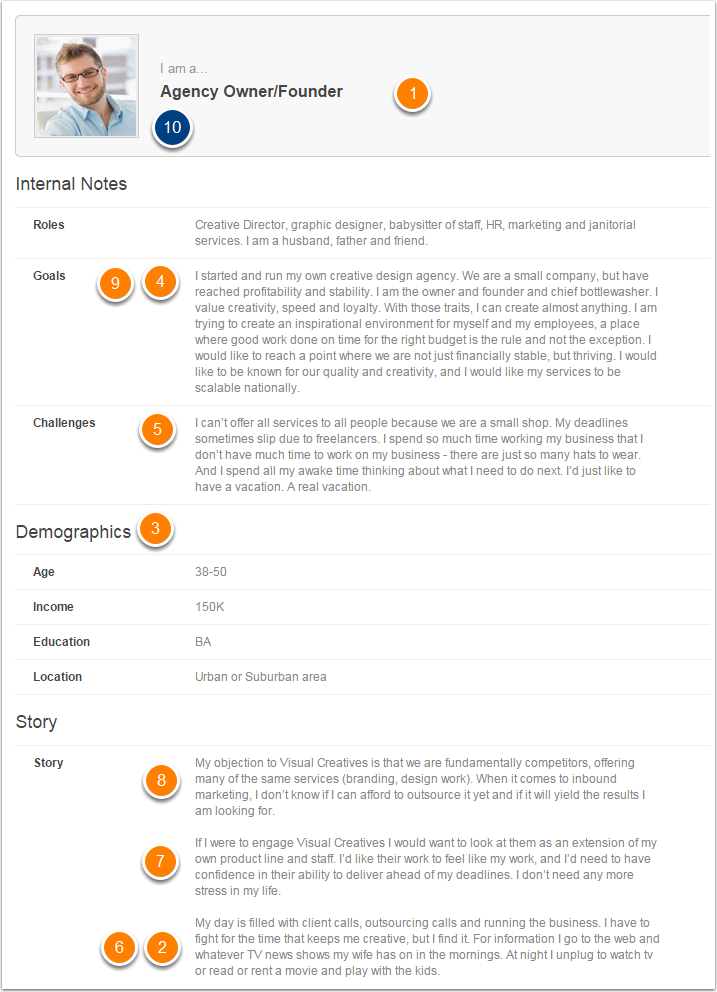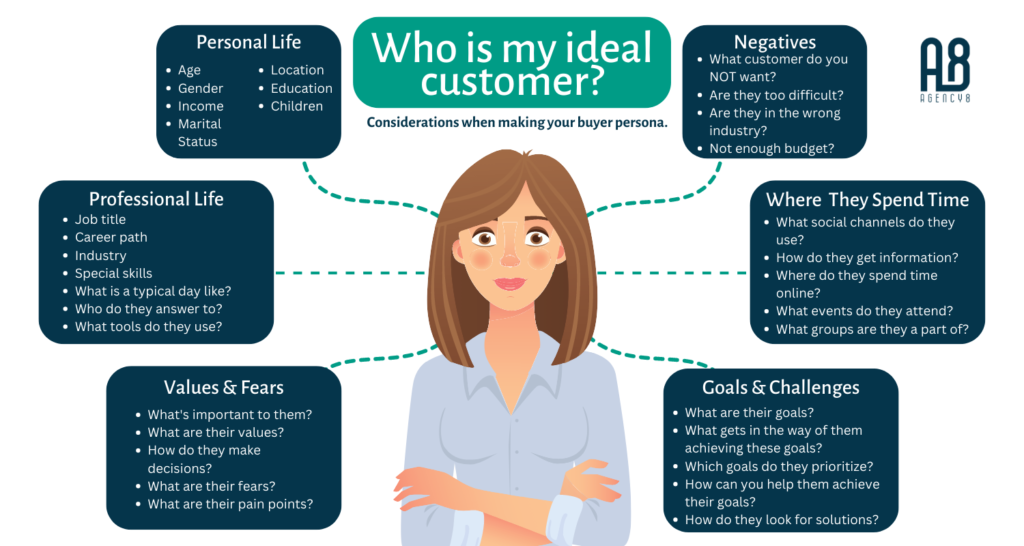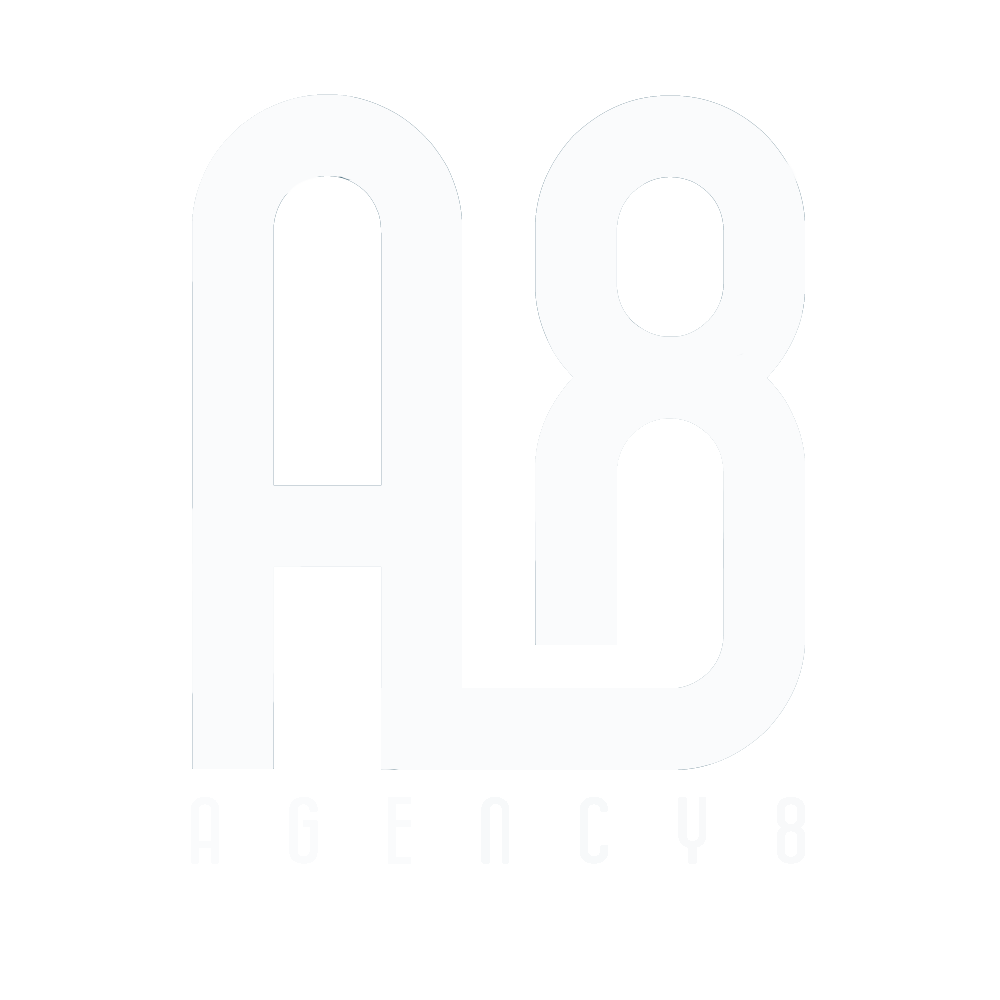If you’re a business owner, then you know that it’s important to know your target market. After all, if you don’t know who you’re selling to, how can you expect to sell anything?
One of the best ways to learn about your target market is by creating a buyer persona. A buyer persona is a research-based picture of your ideal target customer. Creating your buyer persona will help guide your marketing efforts and give you a powerful starting point for any marketing campaign.

What is a buyer persona?
A buyer persona is a research-based profile of your ideal customer. Buyer personas are extremely detailed and dive deeply into what your ideal target customer’s pain points are, what their daily life is like, and more. Furthermore, buyer personas look at how your customer makes the decisions that ultimately lead to a purchase.
Businesses or start-ups may have more than one buyer persona. For example, a SaaS company targeting small businesses may have two buyer personas: one for the business owner and one for the marketing decision-maker.
The goal of a buyer persona is to put yourself in your ideal customer’s shoes so that you can better serve them.
Why does my business need a buyer persona?
Creating your buyer persona will help you understand your target customer better. This understanding is crucial because it allows you to create targeted content that appeals to their specific pain points. Additionally, buyer personas can help improve your sales and marketing efforts by providing greater clarity on who you are targeting.
As a business owner or start-up founder, you should know that you’re selling and marketing solutions to problems that customers have. You need to show the customer that you understand their problems and pain points so that you can build trust. When you build trust, customers will naturally gravitate toward your business and are more likely to choose you over the competition.
Once you have a good understanding of your buyer persona, you can start to create marketing campaigns that are targeted toward them.
If you’re not sure where to start with creating a buyer persona, don’t worry – we’ve got you.
How are buyer personas used?
- Creating marketing strategies: personas help when deciding what copy to write and which keywords to use.
- Help sales team build credibility: salespeople can better understand customers’ pain points and how to address them. This, in turn, helps build trust and rapport and can make your sales team more effective.
- Product Development: understanding your customers can help you make shifts in your product offering to better address their needs.
- Guide customer support teams: your customer support teams are better able to empathize when they know what problems are driving people to use your product/service as a solution. This can go a long way when dealing with angry customers.
- Social Media: understanding your buyer persona means knowing which social platforms they spend time on. This, in turn, can help you focus your time and marketing dollars on the platforms that are frequented by your ideal customers.
How do I create a buyer persona?
There are a few steps involved in creating your buyer persona.
Before you get started and dive into it, write down a list of questions. These questions can help guide your efforts and make sure you’re covering all of the bases. If applicable, ask your team members and employees to write down some questions as well. The questions in this article are not an extensive list, but can be a good place to get started.
You can also take a look at this graphic we made as a starting point for your questions!

Also, as a quick note, personas require research both internally and externally, and they can take a bit of time to create. Just be patient, and know that you’re creating a valuable asset for your organization.
So, let’s jump in to how to create a buyer persona for your business.
1: Choose your ideal customer: the first step is to choose your ideal customer and create a persona based on what you already know about that customer. If you’re a solopreneur, you can sit down and consider your ideal customer alone. However, if you have employees working with you, bring them in to discuss. This will help you get multiple perspectives and allows for greater collaboration amongst your team.
Here are some guiding questions to get you started:
- Who is your ideal customer?
- What are their demographics? (age, gender, location, etc)
- What are their interests and hobbies?
- What are their pain points? (What problems do they need solving?)
- How can you help them?
- What is their buyer journey like? (What steps do they take before making a purchase?)
Once you have a basic idea of who your buyer persona is, you can start to create a more detailed picture.
2: Enhance with research: The second step is to gather data. This data can come from market research, surveys, customer interviews, and more. Data collection should be both internal and external. Internal data includes things like sales data and customer service logs. External data comes from sources like industry reports and demographic data.
There are many questions you can ask when conducting research for your buyer persona. Here are a few examples:
- What challenges does your buyer persona face?
- What are their buying decisions based on?
- Where do they spend time online?
- What motivates them?
- How do they prefer to consume content (e.g., blog posts, infographics, videos)
Answer the Public can help you see what people are asking about your industry, niche, product or service, and more. For example, if you’re a personal trainer, you might turn to Answer the Public to see what people search for related to personal training, workout routines, and more. This can help you to better understand the queries people are using and address pain points or questions people may have.
Using Answer the Public is very easy, all you have to do is go to the website, type in a search term, and you’ll receive search data in return. The website limits the number of free searches you can conduct per day, so use your searches wisely. I also recommend downloading the results from your searches or writing down key points.

Once you have your data, it’s time to start analyzing it. Look for patterns and commonalities among your ideal customers. What do they have in common?
3: Make your persona: your persona should be at least a one-page document or a slide. Remember that the purpose of the buyer persona is to guide your marketing efforts. It’s also a document that will be shared throughout your organization. This means that you want your persona to be as detailed as possible.
If you’re wondering what a persona should look like, check out this article by HubSpot including some examples of great buyer personas.
4: Modify when necessary: a buyer persona doesn’t need to be permanent once it’s made. You may find that it shifts or evolves over time and make changes accordingly. While buyer personas are greatly helpful, don’t stress out too much over making one. Creating buyer personas requires patience, but doesn’t need to be a massive undertaking that takes time away from your high-value tasks.
If my business is really small, do I really need a buyer persona?
The short answer is yes.
A buyer persona can benefit your small business because it gives you a laser-focused view of your target customer. It’s easy to get bogged down in the day-to-day tasks of running a business and lose sight of who your target customers are. A buyer persona can help keep you focused on your ideal customer by providing you with a detailed description of who they are and what they want.
A buyer persona can help you when creating copy for your website, blog posts, and social media. It’s something that’s very helpful to have in your back pocket and will be useful to you throughout the lifetime of your organization.
Additionally, you may be small or just starting out now, but what about when you grow your business? Having a buyer persona that you share with team members when onboarding will keep everyone on the same page.
Conclusion
Buyer personas are helpful tools that are beneficial to your organization. Whether you’re already established, just starting out, a small business owner, or a start-up founder, a persona can help! Every business should have a buyer persona to help guide its marketing strategy and put everyone on the same page.
If you need help creating a buyer persona or have any questions, you can book a 15-minute consultation with us here! In this consultation, we’ll look at your businesses’ needs and see how Agency 8 can help you with our digital marketing solutions.






